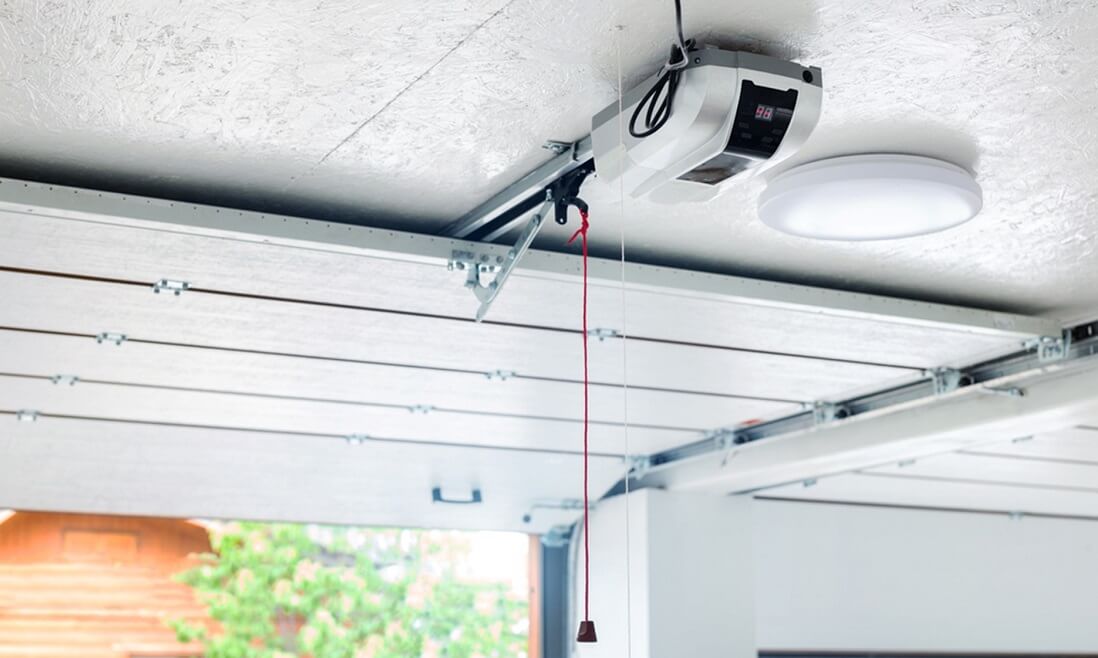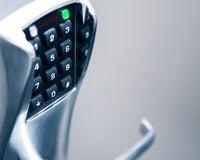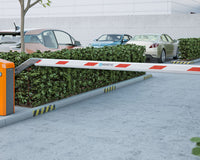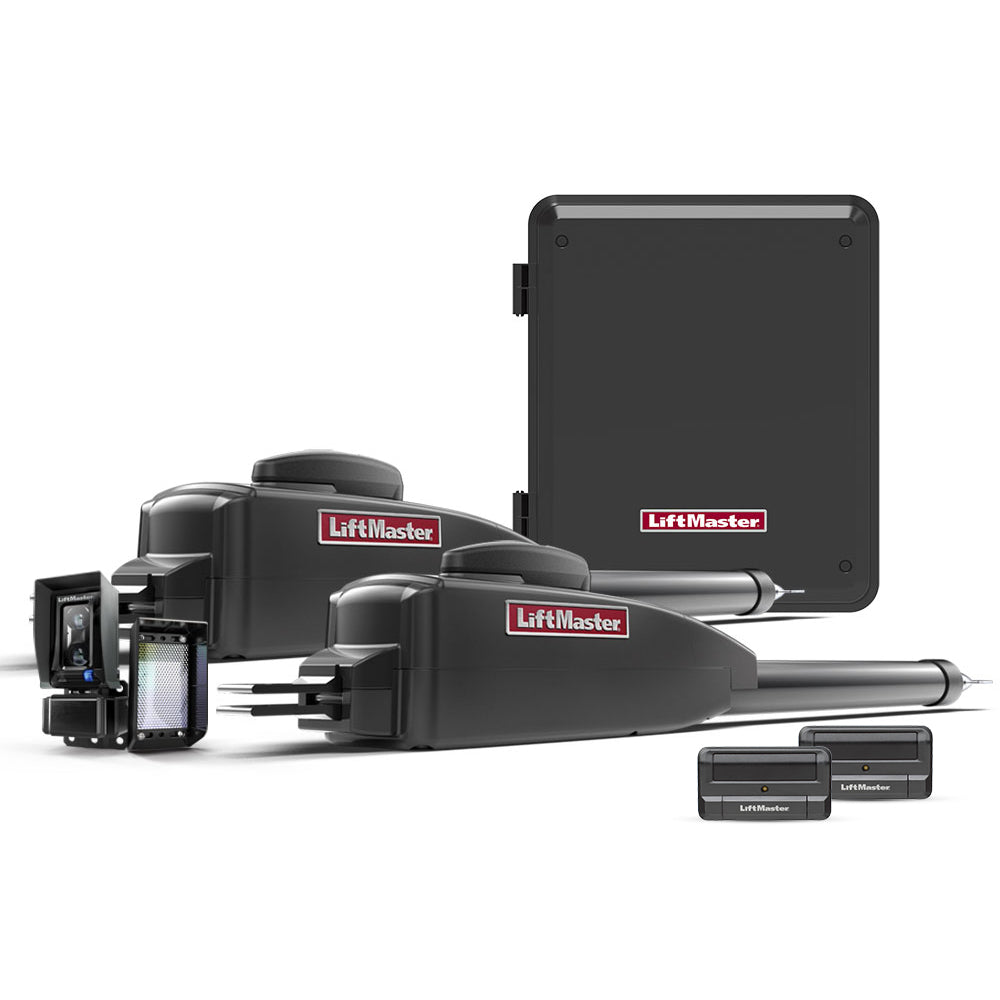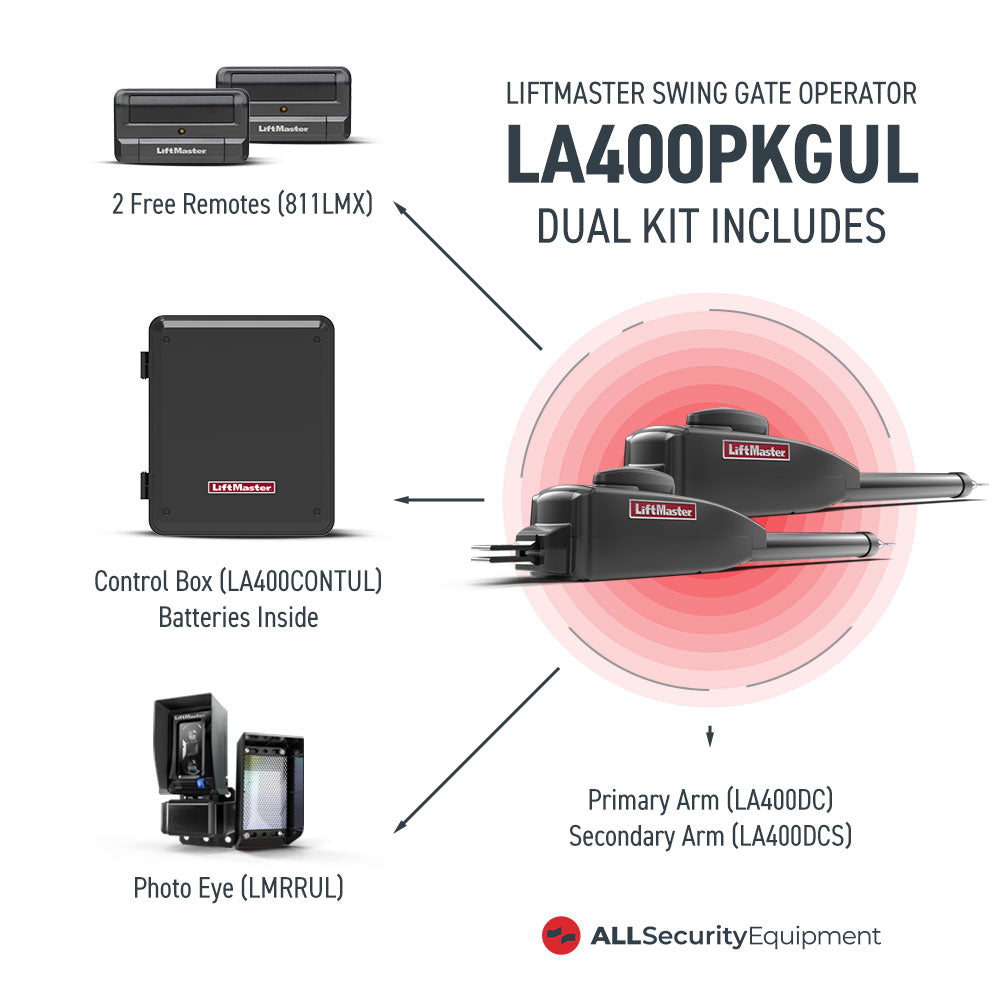You most likely do not give much thought to how garage door openers work and are happy that you can conveniently open and close your garage door with a simple press of a button on your remote. Until your door breaks down, and you cannot figure out the problem or what to do about it.
This article discusses the basic operating mechanism of a garage door opener, including a brief overview of the various parts, types of drive mechanisms, and how the different components work together to enable the garage door to open or close.
Parts of a Garage Door Opener
A garage door opener, also known as a remote control, is a motorized device that controls the opening and closing of a garage door using a radio transmission system and a mechanical counterbalancing pulley system. Most modern ones use a smart garage door remote, although they have a manual backup switch. The entire garage door opener mechanism hangs above the door.
Below is a look at the main parts of a garage door opener.
Motor
The garage door motor is usually mounted on the ceiling and not designed to move the weight of the door. Rather, it provides the initial force to get the various components in motion. It also controls how far the door opens or closes to prevent it from slamming open or shut.
Most garage door openers have a 1/2hp motor unit powered by a 120 volts outlet. The horsepower can be higher, about ¾-1 ½ hp, if the door is heavier. They can use AC or DC, but DC is preferable as DC motors operate more smoothly and quietly.
Torsion Springs
These are one of the most essential parts of a garage door opener. They bear the weight of the door. They offset the door's weight by either unwinding or winding to lift or lower the door. Typically, they are placed at the center above the door.
Tube/Shaft
The tube/shaft is the stationary rod that holds the torsion springs.
Drums
These are pulley wheels attached to each end of the tube. When torque is applied to the door opener mechanism, the drums rotate, causing the cables to move.
Cables
The cables wrap around the drums and connect to the torsion springs. They wind or unwind to lift or lower the door.
Drive Mechanism
Each door opener has a chain, screws, or a belt connecting to the trolley to move the door.
Photo Eye or Safety Reversing Release
This part is a safety sensor that senses if anything or anyone is in the way of the door and immediately reverses the door closing mechanism to prevent injuries.
Emergency Release
It is a quick-release mechanism that enables you to operate the door manually. In most modern garage doors, there is an overhanging red cord that you can pull to activate the quick-release mechanism.
Types of Garage Door Drive Systems
As mentioned earlier, there are various types of garage door drive systems as follows:
Belt Drive Opener
They are the most expensive of all the drive systems. A rubber belt moves the trolley. Since no metallic parts come into contact, the operation is smooth and quiet. The operator drive system is easy to maintain. Belt drive openers are best suited if your garage door is located near or below your living room or bedroom area.
Chain Drive System
A metal chain attaches to the trolley. The drive mechanism is noisy. Nevertheless, it is the most economical, thus, most commonly used. Chain drive openers are best suited for detached garages or those located away from the living or bedroom areas.
Screw Drive System
A long screwdriver is attached to the track, and the trolley is connected to the screw. The trolley glides on a rotating threaded steel rod to lift and lower the door. Like the belt drive system, it is quieter and smoother than chain drive openers.
Direct Drive
This drive system is relatively recent and has the easiest operation mechanism. The trolley has a motor unit inside. The motor has a gear wheel that guides the trolley along a fixed chain. Therefore, no chain, belt, or screwdriver connects the torsion springs to the trolley. It is extremely quiet and does not require any maintenance.
Jackshaft Opener
This is the most recent drive mechanism. Initially, it was mainly used for commercial doors but is now commonly used on residential garage doors. Its design consists of a motor that attaches directly to the torsion rod. Therefore, it spins the rod to either open or close the door. It also includes additional components such as a cable tension monitor and separate lock to enhance safety. The jackshaft opener takes up less space on the ceiling than other types of drive.
How Do All These Parts Work Together?
When you push a button on the garage door remote to open or close the door, the transmitter in the remote sends a code to the receiver in the garage door.
The signal switches the motor unit on and sets the various components in motion, applying torque to the shaft holding the torsion springs through a counterbalance action on the cables. As a result, the trolley, which is connected to the arm that attaches to the top of the door, slides backward or forward, opening or closing the door.
Modern garage door openers have a controller chip that generates unique synchronized codes each time the remote button is pressed. Most garage door companies no longer make universal remotes due to the increased risk of a security breach. Therefore, your garage door remote can't open another garage door.
Conclusion
Understanding how your garage door opener works helps you maintain it better and troubleshoot any issues. Smart garage door openers use a remote to operate but may have a manual switch or keypad controller attached to the wall near the door. Once you know the various parts and understand their function in the entire garage door system, you can easily identify an issue if it arises and the right door repair. If you're interested in learning more about garage door openers or if you have any questions, feel free to contact us. We're happy to help!

